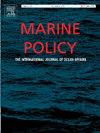Analyzing the behavior of beachgoers in the city of Lima and their relationship with potential plastic emissions
IF 3.5
2区 社会学
Q2 ENVIRONMENTAL STUDIES
引用次数: 0
Abstract
Beach littering is a source of marine plastic waste accumulation. This is particularly so in overcrowded beaches in the Global South in which cleaning measures are scarce or sporadic and lack of waste management systems can increase plastic release. In the current study we focus on the importance of the behavior shown by beachgoers and how their conduct relates to the amount of plastic that potentially ends up entering littoral ecosystems. Transportation services to beaches, sports, food, and beverage containers are analyzed through a 24-question survey performed to 500 beachgoers in 4 beaches (i.e., Venecia, Punta Negra, Punta Hermosa and San Bartolo) located in the megacity of Lima, Peru, in February 2022. The data obtained were then processed to understand the differences in behavior across different beaches. Moreover, a K-means algorithm was used to identify representative beachgoer profiles. The results showed a dichotomous behavior between two groups of beaches, in which the size group of beachgoers, transportation mode, accommodation, food consumption patterns or the use of reusable containers are some of the main differences between the two groups. No major differences were identified in terms of age distribution across the different beaches, but group sizes were higher in Punta Negra and Villa El Salvador. The K-means algorithm suggests that the surveyed population can be grouped into three main categories, of which two correspond mainly to higher socioeconomic beachgoers in the beaches of Punta Hermosa and San Bartolo. Overall, single use plastic for food and beverages appears as one of the main sources of plastic pollution across beaches and groups, although other sources of plastic emission should not be underestimated. Finally, the three beachgoer profiles identified are useful to implement targeted policies to minimize the environmental impacts of these profiles.
分析利马市海滩游客的行为及其与潜在塑料排放的关系
海滩垃圾是海洋塑料废物积累的一个来源。在全球南部过度拥挤的海滩,这种情况尤为严重,因为那里的清洁措施很少或时有时无,而且缺乏废物管理系统会增加塑料的排放。在当前的研究中,我们重点关注海滩游客行为的重要性,以及他们的行为与可能最终进入沿岸生态系统的塑料数量之间的关系。2022 年 2 月,我们在秘鲁利马特大城市的 4 个海滩(即 Venecia、Punta Negra、Punta Hermosa 和 San Bartolo)对 500 名海滩游客进行了 24 个问题的调查,对海滩的交通服务、运动、食品和饮料容器进行了分析。然后对所获得的数据进行处理,以了解不同海滩上的行为差异。此外,还使用 K-means 算法来识别具有代表性的海滩游客特征。结果显示,两组海滩之间的行为存在二分法,其中海滩游客的规模、交通方式、住宿、食品消费模式或可重复使用容器的使用是两组海滩之间的一些主要差异。在不同海滩的年龄分布方面没有发现重大差异,但蓬塔内格拉和萨尔瓦多别墅的群体规模较大。K-means 算法表明,调查人群可分为三大类,其中两类主要对应 Punta Hermosa 和 San Bartolo 海滩上社会经济地位较高的海滩游客。总体而言,用于食品和饮料的一次性塑料似乎是各海滩和各群体塑料污染的主要来源之一,但也不应低估其他塑料排放源。最后,所确定的三种海滩游客特征有助于实施有针对性的政策,最大限度地减少这些特征对环境的影响。
本文章由计算机程序翻译,如有差异,请以英文原文为准。
求助全文
约1分钟内获得全文
求助全文
来源期刊

Marine Policy
Multiple-
CiteScore
7.60
自引率
13.20%
发文量
428
期刊介绍:
Marine Policy is the leading journal of ocean policy studies. It offers researchers, analysts and policy makers a unique combination of analyses in the principal social science disciplines relevant to the formulation of marine policy. Major articles are contributed by specialists in marine affairs, including marine economists and marine resource managers, political scientists, marine scientists, international lawyers, geographers and anthropologists. Drawing on their expertise and research, the journal covers: international, regional and national marine policies; institutional arrangements for the management and regulation of marine activities, including fisheries and shipping; conflict resolution; marine pollution and environment; conservation and use of marine resources. Regular features of Marine Policy include research reports, conference reports and reports on current developments to keep readers up-to-date with the latest developments and research in ocean affairs.
 求助内容:
求助内容: 应助结果提醒方式:
应助结果提醒方式:


